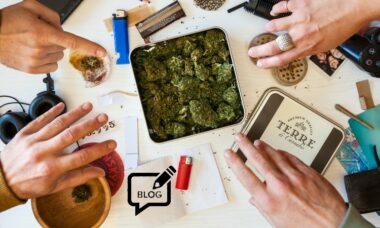 At the end of last month, news of an upcoming reclassification of cannabis to a less-restrictive schedule in the US was welcomed as a milestone development by legalisation advocates and industry representatives, as self-reported consumption hit historically high levels across the country.
At the end of last month, news of an upcoming reclassification of cannabis to a less-restrictive schedule in the US was welcomed as a milestone development by legalisation advocates and industry representatives, as self-reported consumption hit historically high levels across the country.
While moving cannabis from Schedule I to a less-restrictive Schedule III, as agreed by the US Drug Enforcement Administration (DEA) and Department of Health and Human Services (HHS), will not legalise the recreational market at a federal level, it may reflect the need for authorities to modify their attitude to align with changes in society, which, a study published in the journal Addiction recently demonstrated, appear to have normalised regular use.
Reported use is higher when restrictions are lower
Based on the recently released survey on self-reported cannabis use in the US over recent decades, consumption in the country has grown in line with policy changes.
“A growing share of cannabis consumers report daily or near daily use, and their numbers now exceed the number of daily and near daily drinkers,” researchers wrote, as they highlighted that the long-term trends in cannabis consumption in the US mirror the different policies adopted by regulators in the years covered by the study, namely 1979 to 2022.
Declines in cannabis use were reported “during periods of greater restriction”, while increases were observed “during periods of policy liberalisation”.
According to Jonathan Caulkins, author of the study, which is based on data from the US National Survey on Drug Use and Health, while self-reported cannabis consumption in 1979 reflected the “relatively liberal policies of the 1970s”, it was then marked by 12 years of conservative regulation applied under the administrations of presidents Ronald Reagan and George H. W. Bush.
Legalisation at state level then marked growing self-reported rates of cannabis use until 2022, when the latest available data were released.
More popular than alcohol?
Caulkins, who is a professor of public policy at Carnegie Mellon University’s Heinz College, clarified that far more people in the US drink alcohol than use cannabis, but the frequent use of cannabis is now more common than a frequent consumption of alcohol.
This, though, Caulkins said, may also be due to the fact that respondents to the survey now feel more comfortable reporting their use of cannabis. Nonetheless, the author said “it is striking that high-frequency cannabis use is now more commonly reported than is high-frequency drinking”.
Caulkins makes it clear he doesn’t necessarily believe less-restrictive policies have driven cannabis consumption rates up. Both higher self-reported consumption rates and less-restrictive regulation may be “manifestations of changes in underlying culture and attitudes”, he wrote.
What now appears to be undeniable is that cannabis consumption across the country is increasingly normalised, to an extent where it will be very difficult for federal regulators not to take this into account when drafting the next cannabis laws.
According to authorities on the subject, it is now only a matter of time before recreational cannabis is decriminalised at a national level.
– Tiziana Cauli CannIntelligence staff
Photo: Terre di Cannabis







